M
I
C
R
O
S
T
O
R
Y
O
F
A
R
T
........................................................

NOW COMPLETED:

........................................................
MICROSTORY OF ART
ONLINE JOURNAL FOR ART, CONNOISSEURSHIP
AND CULTURAL JOURNALISM
........................................................
INDEX | PINBOARD | MICROSTORIES |
FEATURES | SPECIAL EDITIONS |
HISTORY AND THEORY OF ATTRIBUTION |
ETHNOGRAPHY OF CONNOISSEURSHIP |
SEARCH

........................................................



 >MICROSTORIES
>MICROSTORIES
- Richard Serra
- Martin Scorsese
- Claude Simon
- Sunshine
- Werner Herzog
- The Creation
- Marcel Duchamp
- Nino Rota
- Wölfflin and Woolf
- Hansjörg Schneider
- Kraftort Arkadien
- Visual Biography
- Schlaraffenleben
- Die Geisteswissenschaften
- The Voyeur
- Buzzword Sustainability
- Paul Verlaine
- Tao Yuanming
- New Beginning
- Seneca
- Still Lifes
- Charles Baudelaire
- Frédéric Chopin
- The Art History of Sustainability
- Wang Wei
- Solarpunk
- Historians of Light
- Lepanto
- Renaturalization
- Plates
- Snow in Provence
- Learning to See
- Picasso Dictionaries
- Peach Blossom Spring
- Picasso Tourism
- Tipping Points
- Sviatoslav Richter
- Weather Reports
- Treasure Hunt
- Another Snowscape in Picasso
- Picasso in 2023
- Dragon Veins
- The Gloomy Day
- The Art of the Pentimento
- Reforestation
- The Status of Painting
- Emergency Supply
- Punctuality
- Watching Traffic
- Zhong Kui
- How Painting Survived the 1990s
- Confirmation Bias
- Sustainability and Luxury
- Garage Bands
- Picasso and Artificial Intelligence
- Eyes of Tomorrow
- Picasso in 2023 2
- Gluing Oneself to Something
- Suburbia
- Bamboo
- Sustainability and Carpe Diem 1
- Interviews with Bruegel
- Sustainability and Carpe Diem 2
- Coffee & Sugar
- Bamboo 2
- Picasso in 2023 3
- Sustainability and Carpe Diem 3
- Cherry Orchard
- Old Magazines
- Chance
- Nick Drake
- Harlequin
- The Smartphone & the Art Book
- Atlas Syndrome
- The Kitchen
- Atlas Syndrome 2
- Consideration
- Tori Amos
- School
- Orchard Auctioning Day
- The Hundred Years’ War
- Sócrates
- Chameleon
- Nefertiti Bust
- Picasso as a Computer
- Sunflowers
- Philemon & Baucis
- Ode to the Radio
- Childhood
- Wimmelbild
- Restitution
- Nick Drake 2
- Wishful Thinking
- Sundays
- The Independent Scholar
- September
- The Fisherman by Pirosmani
- Microadventure
- Sociology
- Salvator Mundi
- Chillon
- Appassionata
- Amber
- Homer
- Berlin
- Planet Walk
- Improvisation
- Seeing Picasso
- These Nice Kids
- Robber
- The One
- The Sea Turtle
- Zoo
- Through the Hush
- Wunderkammer
- I Do Not Seek, I Find
- Shopping Mall
- Food Hamper
- The Secretary
- This Gate
- Nor Rainy Day
- House on a Hill
- Beautiful Island
- Second-hand Bookstore
- Flat
- Slap in the Face
- Serra, Wenkenpark
- Apologies
- The Bells
- Nordmann Fir
- Picasso Wanting To Be Poor
- Picasso, Pirosmani
- A Brief History of Sculpture
- 24 Sunsets
- Rusty Phoenix
- Glove
- Wintry Stanza
- A Song
- Like A Beatle
- Catching An Orange
- Solar Bees
- Permaculture

 >FEATURES
>FEATURES
- Van Gogh On Connoisseurship
- Two Museum’s Men
- Ende Pintrix and the City in Flames
- Titian, Leonardo and the Blue Hour
- The Man with the Golden Helmet: a documentation
- Un Jury d’admission à l’expertise
- Learning to See in Hitler’s Munich
- Leonardo da Vinci and Switzerland
- The Blue Hour Continued
- The Blue Hour in Louis Malle
- Kafka in the Blue Hour
- Blue Matisse
- Blue Hours of Hamburg and LA
- A Brief History of the Cranberry
- The Other Liberale in the House
- The Blue Hour in Raphael
- Who Did Invent the Blue Hour?
- Monet on Sustainability
- Velázquez and Sustainability
- The Blue Hour in Guillaume Apollinaire
- Van Gogh on Sustainability
- The Blue Hour in Marcel Proust
- Picasso and Sustainability
- The Contemporary Blue Hour
- The Blue Hour in 1492
- The Blue Hour in Hopper and Rothko
- Hopper and Sustainability
- The Blue Hour in Ecotopia
- The Hour Blue in Joan Mitchell
- Explaining the Twilight
- The Twilight of Thaw
- The Blue Hour in Pierre Bonnard
- Explaining the Twilight 2
- Picasso on Stalin
- Rubens on Sustainability
- The Salvator Mundi in Bruegel and Rubens
- The Blue Hour in Leonardo da Vinci and Poussin
- The Blue Hour in Rimbaud
- Faking the Dawn
- Frost and Thaw in Ilya Ehrenburg
- Picasso, Stalin, Beria
- Picasso, Solzhenitsyn and the Gulag
- Shostakovich on Picasso
- Hélène Parmelin in 1956
- Historians of Picasso Blue
- Picasso Travelling to Moscow 1
- The Blue Hour in Caravaggio
- Picasso Travelling to Moscow 2
- Picasso, the Knife Game and the Unsettling in Art
- Some Notes on Leonardo da Vinci and Slavery
- Picasso Moving to the Swiss Goldcoast
- The Blue Hour in Camus
- The Blue Hour in Symbolism and Surrealism
- Caspar David Friedrich in His Element
- Exhibiting the Northern Light
- Caspar David Friedrich in His Element 2
- Robert Schumann and the History of the Nocturne
- The Blue Hour in Robert Schumann
- Caspar David Friedrich and Sustainability
- The Twilight of Thaw 2
- Multicultural Twilight
- The Blue Hour in Anton Chekhov
- The Blue Hour in Medieval Art
- Twilight Photography
- The Blue Hour in Bob Dylan
- Iconography of Optimism

 >SPECIAL EDITIONS
>SPECIAL EDITIONS
- Visions of Cosmopolis
- Mona Lisa Landscapes
- Turner and Ruskin at Rheinfelden
- Painters On TV & On TV
- Spazzacamini in Art
- A Last Glance at Le Jardin de Daubigny
- The Experimental Cicerone
- A Dictionary of Imaginary Art Historical Works
- Iconography of Blogging
- Begegnung auf dem Münsterplatz
- Cecom
- Das Projekt Visual Apprenticeship
- Those Who See More
- A Fox on Seeing with the Heart
- Sammlung Werner Weisbach
- Daubigny Revisited
- Some Salvator Mundi Microstories
- Some Salvator Mundi Afterthougths
- Some Salvator Mundi Variations
- Some Salvator Mundi Revisions
- A Salvator Mundi Questionnaire
- A Salvator Mundi Puzzle
- Unknown Melzi
- Francis I and the Crown of Charlemagne
- From Amboise to Fontainebleau
- Drones Above Chambord
- Looking Back At Conques
- Flaubert At Fontainebleau
- Images of Imperial Ideology
- The Chronicles of Santa Maria delle Grazie
- Seeing Right Through Someone
- Melzi the Secretary
- Eying Glass
- A Foil to the Mona Lisa
- A Renaissance of the Cartoon
- Sketching a Family Tree
- Venetian Variations
- A Brief History of Digital Restoring
- A Consortium of Painters
- Leonardeschi and Landscape
- A Christ in Profile
- Learning to See in Spanish Milan
- A History of Gestures
- Leonardo and Josquin
- A Renaissance of the Hybrid
- Suida and Heydenreich
- The Watershed
- Three Veils
- From Beginning to End
- Connoisseurship of AI
- Twilight and Enlightenment
- The Blue Hour in Chinese Painting
- Dusk and Dawn at La Californie
- Iconography of Sustainability
- The Blue Hour in Goethe and Stendhal
- The Sky in Verlaine
- The Blue Hour in Paul Klee
- Iconography of Sustainability 2
- The Blue Hour in Charles Baudelaire
- From Bruegel to Solarpunk
- Some Salvator Mundi Documentaries
- Some More Salvator Mundi Monkey Business
- The Windsor Sleeve
- Brigitte Bardot’s Encounter with Picasso
- Art Historians and Historians
- A Salvator Mundi Chronicle
- The Salvator Mundi and the French Revolution
- The Fontainebleau Group
- The Encounter of Harry Truman with Pablo Picasso
- The Fontainebleau Group Continued
- The Windsor Sleeve Continued
- The Salvator Mundi in Early Netherlandish Painting 1
- Some Salvator Mundi Resources
- A New Salvator Mundi Questionnaire
- The Woman in Picasso
- The Yarborough Group
- Melzi, Figino and the Mona Lisa
- The Yarborough Group Continued
- A Salvator Mundi Global History
- The Salvator Mundi in Medieval Art
- The Salvator Mundi in Medieval Art 2
- The Salvator Mundi in Early Netherlandish Painting 2


 >HISTORY AND THEORY OF ATTRIBUTION
>HISTORY AND THEORY OF ATTRIBUTION
- The Mysterious »Donna Laura Minghetti-Leonardo«
- Assorted Demons of Connoisseurship
- Panofsky Meets Morelli
- Discovering the Eye of Sherlock Holmes
- Handling the Left-handed Hatchings Argument
- Visual History of Connoisseurship
- Alexander Perrig
- Connoisseurship in 2666
- What Postmodernity Has Done to Connoisseurship
- Dividing Four Fab Hands
- A Leonardesque Ambassador
- Test Cases in Connoisseurship
- A Raphael Expertise
- How to Tell Titian from Giorgione
- Louise Richter
- The Unique Property in the History of Connoisseurship
- An Expertise by Berenson
- The Book of Expertises
- An Album of Expertises
- An Expertise by Friedländer
- A Salvator Mundi Provenance
- How to Tell Leonardo from Luini
- An Expertise by Crowe and Cavalcaselle
- An Expertise by Bayersdorfer
- An Expertise by Hermann Voss
- An Expertise by Hofstede de Groot
- Leonardeschi Gold Rush
- An Unknown »Vermeer«
- An Expertise by Roberto Longhi
- An Expertise by Federico Zeri
- A Salvator Mundi Geography
- A Salvator Mundi Atlas
- The Bias of Superficiality
- 32 Ways of Looking at a Puzzle
- James Cahill versus Zhang Daqian
- Five Fallacies in Attribution
- On Why Art History Cannot Be Outsourced to Art Dealers
- On Why Artificial Intelligence Has No Place in Connoisseurship
- Salvator Mundi Scholarship in 2016
- Leonardo da Vinci at the Courts
- The Story of the Lost Axe
- The Last Bruegel
- A Titian Questionnaire
- On Where and Why the Salvator Mundi Authentication Did Fail
- The Problem of Deattribution

 >ETHNOGRAPHY OF CONNOISSEURSHIP
>ETHNOGRAPHY OF CONNOISSEURSHIP
MICROSTORY OF ART
ONLINE JOURNAL FOR ART, CONNOISSEURSHIP
AND CULTURAL JOURNALISM
........................................................

***
ARCHIVE AND FURTHER PROJECTS

1) PRINT


***
2) E-PRODUCTIONS


........................................................

........................................................

........................................................
FORTHCOMING:


***
3) VARIA

........................................................

........................................................

........................................................

........................................................

........................................................
***
THE GIOVANNI MORELLI MONOGRAPH

- The Giovanni Morelli Monograph
........................................................
MICROSTORY OF ART
ONLINE JOURNAL FOR ART, CONNOISSEURSHIP AND CULTURAL JOURNALISM
HOME
SPECIAL EDITION
| MICROSTORY OF ART ONLINE JOURNAL FOR ART, CONNOISSEURSHIP AND CULTURAL JOURNALISM The Fontainebleau Group Continued  |
(30.1.2023) Here our research on the subgroup of Salvator Mundi paintings that we had referred to, early in January, as the Fontainebleau group does continue. We are proud to present a new entry to that group, the version of the Musée des beaux-arts de Quimper, which does obviously belong to that group as well, but may be unknown to most Salvator Mundi scholars. We continue to look at the provenance of the Detroit version. And last but not least: we may look further at the jewellery of Maria de’ Medici.
[preliminary note: below I am also reproducing my ›Leonardo da Vinci at the Courts‹ essay, with the section on ›Melzi at Fontainebleau‹, because not only the Salvator Mundi does multiply at Fontainebleau, but, as it appears, also the Melzi Flora; and as to the attributional problem of the notoriously famous Salvator Mundi version, it is important to know what happens at Fontainebleau, and also with other pictures, and for example with pictures that, today, are attributed to Francesco Melzi and not to Leonardo]
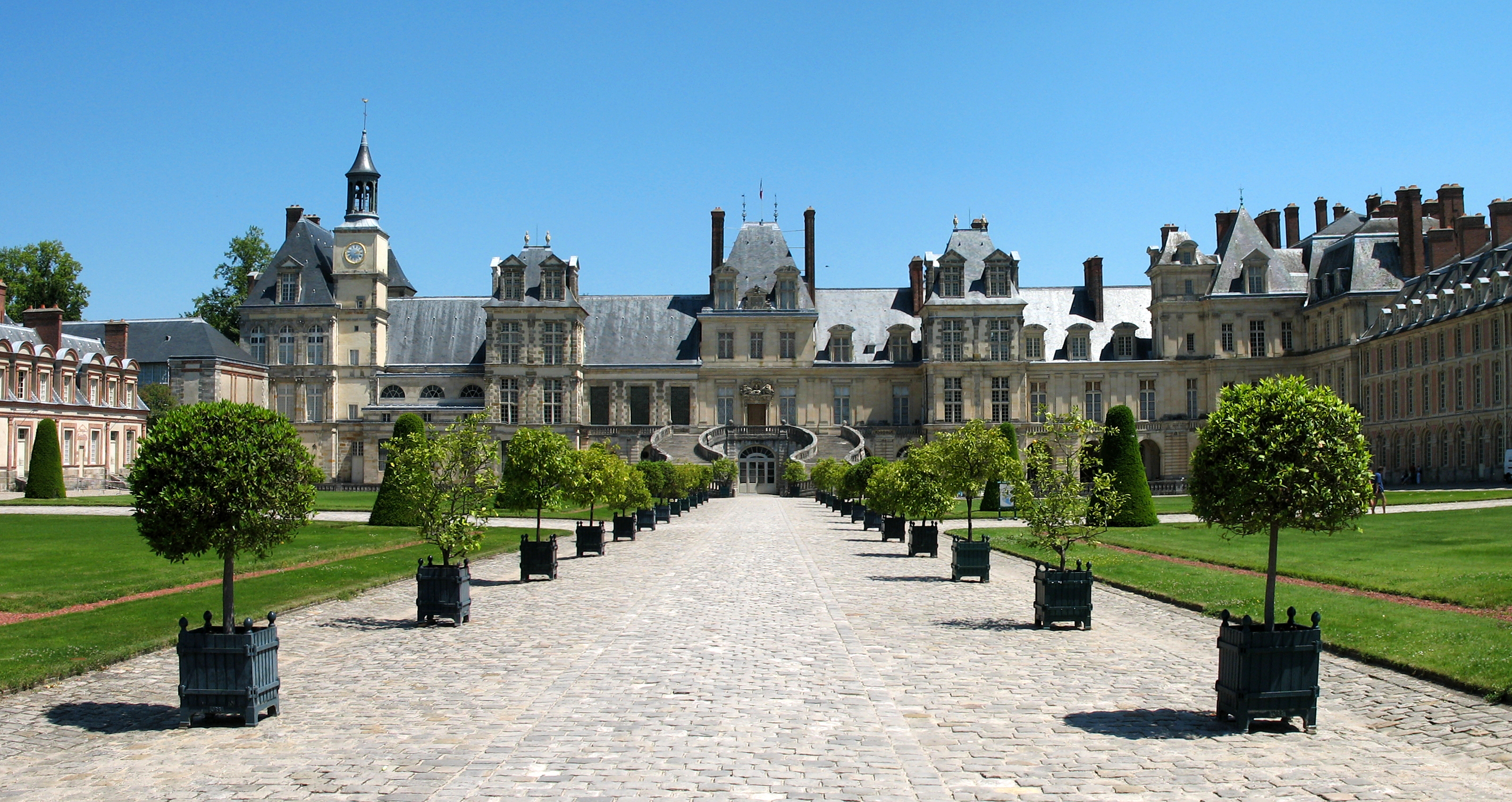
(Picture: Kries)

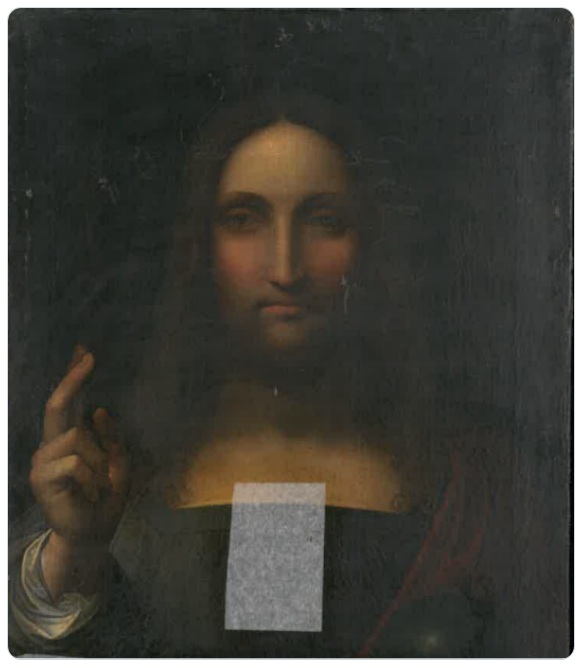
(Picture: twitter.com; Musée des beaux-arts de Quimper}
One) A New Addition to the Fontainebleau Group: the Quimper Version
The Salvator Mundi version of the Musée des beaux-arts de Quimper (large picture on the left) is known to me not because I have visited the city of Quimper, but because the official Twitter channel of the museum did tweet a picture of the painting early in 2020. And I dare to say, judging from that picture (and despite the state of the painting), that this version is obviously closely related to the version of the Detroit Institute of Art (small picture on the left and on the right). The Quimper version is (or was) being restored, at c2rmf, as it seems. And what I know about this version is that it had been, in the 19th century, attributed to Bernardino Luini (see here).
It is the first of two new (unknown) Salvator Mundi versions that I am presenting here (the other version I am going to present in my The Windsor Sleeve Continued essay.

Two) The Alleged French Provenance of the Detroit Version
After 1800 the Detroit Salvator Mundi had been presented as a Leonardo, and it had been said that it had been painted for French king Francis I. Is it necessary to remind that both of these ideas have been falsified by dendrochronology?
But what about the rest of the provenance story? Well, the question would be: how are we able to decide if the rest, given that a large part of the provenance narrative is already falsified, is credible?

Apart from the fact that the Detroit picture indeed has a French provenance (if it was painted by Ambroise Dubois at Fontainebleau, this may be the grain of truth in that provenance story), it has recently become even more likely that Richard Troward, the Pall Mall sollicitor who bought the Detroit picture, did indeed buy the Detroit picture after it had been at Buckingham House and that he may have bought it from Buckingham House (perhaps with the help of another intermediary dealer). And why? Because Richard Troward was a collector who, according to provenance researchers, but also according to other sources, was closely associated with another collector, a man named Thomas Hammersley. Who was nobody else than the Banker of the Prince of Wales. The Prince of Wales was George IV (picture on the left), who was also the one who had Buckingham House remodelled.
Given these facts the two provenance threads (that of the Detroit picture, a thread that begins with Troward; and that of the notoriously famous Salvator Mundi, whose alleged early provenance ends at Buckingham House) seem to come even more closer than anybody ever may have thought. And I see three possible explanations of why art dealers of the 19th century may have given a French provenance to the Detroit picture (or accepted one of it): because a) one did not want to name an English Royal provenance; b) because one did want to support the credibility of the picture being a Leonardo (painted for Francis I), and c) one may have assumed that the picture came from the Orléans sale, as another picture, a Rubens, that went through the hands of Hammersley first, and then of Troward.
But again: the idea that the picture may have been painted for Francis I is falsified. It was not. Because of which one may also and has to question the rest of the provenance story. And again: the question is: on what grounds may we say that the rest is credible, if a large part has already been proven to be false, and given the fact that the two provenance threads come as close as they do?


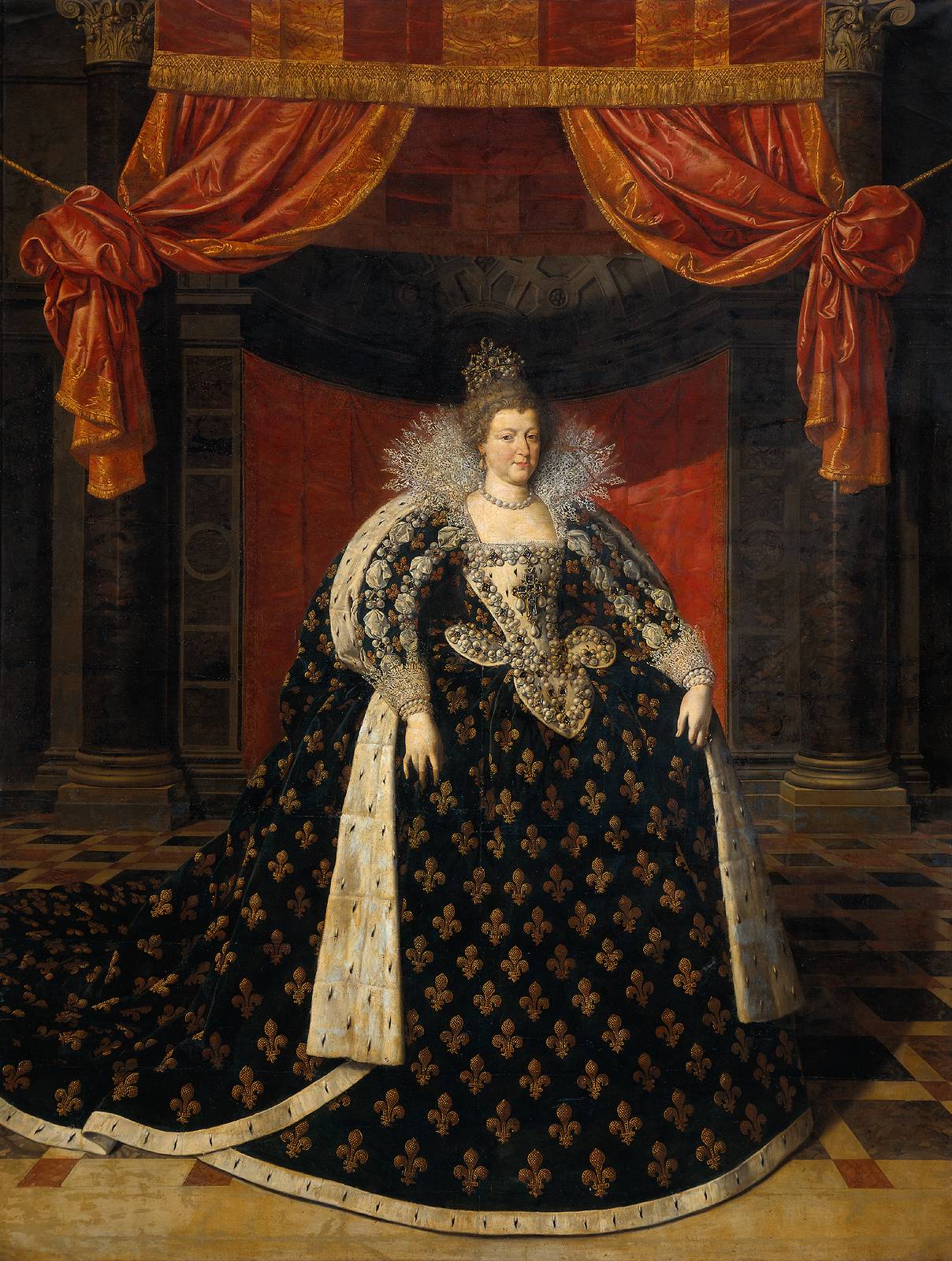
Three) The Jewellery of Maria de’ Medici
The jewellery that Maria de’ Medici is wearing in portraits by Frans Pourbus the Younger is similar, but not identical to that in the Dubois Salvator and the Wedding-by-Proxy-painting in Fontainebleau (based on a comparison of the brooch with pearls, combined with a cherub motive, I had linked these two pictures and attributed the Detroit Salvator to Dubois).
We may find that this jewellery in the Pourbus portrait (where no cherub does appear) makes it even more credible that the Detroit Salvator is indeed by Dubois or his circle (by someone indeed close to Maria de’ Medici, that is), and we may assume that the style of jewellery actually weared by Maria is seen in the Salvator as well as in her portraits, or did at least influence the jewellery shown in these paintings.
Pourbus the Younger entered the service of Maria de’ Medici at a time Dubois was at the end of his career (in 1609, as it seems). And one might look into the history of jewellery, in (official style court) painting, or in religious painting even further, to establish perhaps a chronology that might show to be relevant also as to the dating of the Detroit picture.
MICROSTORY OF ART
ONLINE JOURNAL FOR ART, CONNOISSEURSHIP AND CULTURAL JOURNALISM
HOME
| MICROSTORY OF ART ONLINE JOURNAL FOR ART, CONNOISSEURSHIP AND CULTURAL JOURNALISM Leonardo da Vinci at the Courts  |
(21.1.2023) Looking back at my 2021 New Salvator Mundi History, which was a project in its own right, my research interest is now developing into two directions: our perspective has a) to be broadened towards a general history of Leonardo attribution (a project that only can embarked on with a good portion of sarcasm and humour, because this story is so full of stuff and nonsense), and b) we have to study the Salvator Mundi iconography now in various epochs and geographical regions, aiming at preparing the overview that is lacking, and starting, perhaps, with Early Netherlandish painting. But below I am showing, with three examples, that at around 1600, there was already confusion as to what Leonardo had painted and as to what the Leonardeschi. Three examples of discernement lost (or never attained), and three examples of Leonardo da Vinci, or better: of what was taken as Leonardo, at/from the Courts of Europe.
One) Melzi at Fontainebleau


(Picture: Kries)
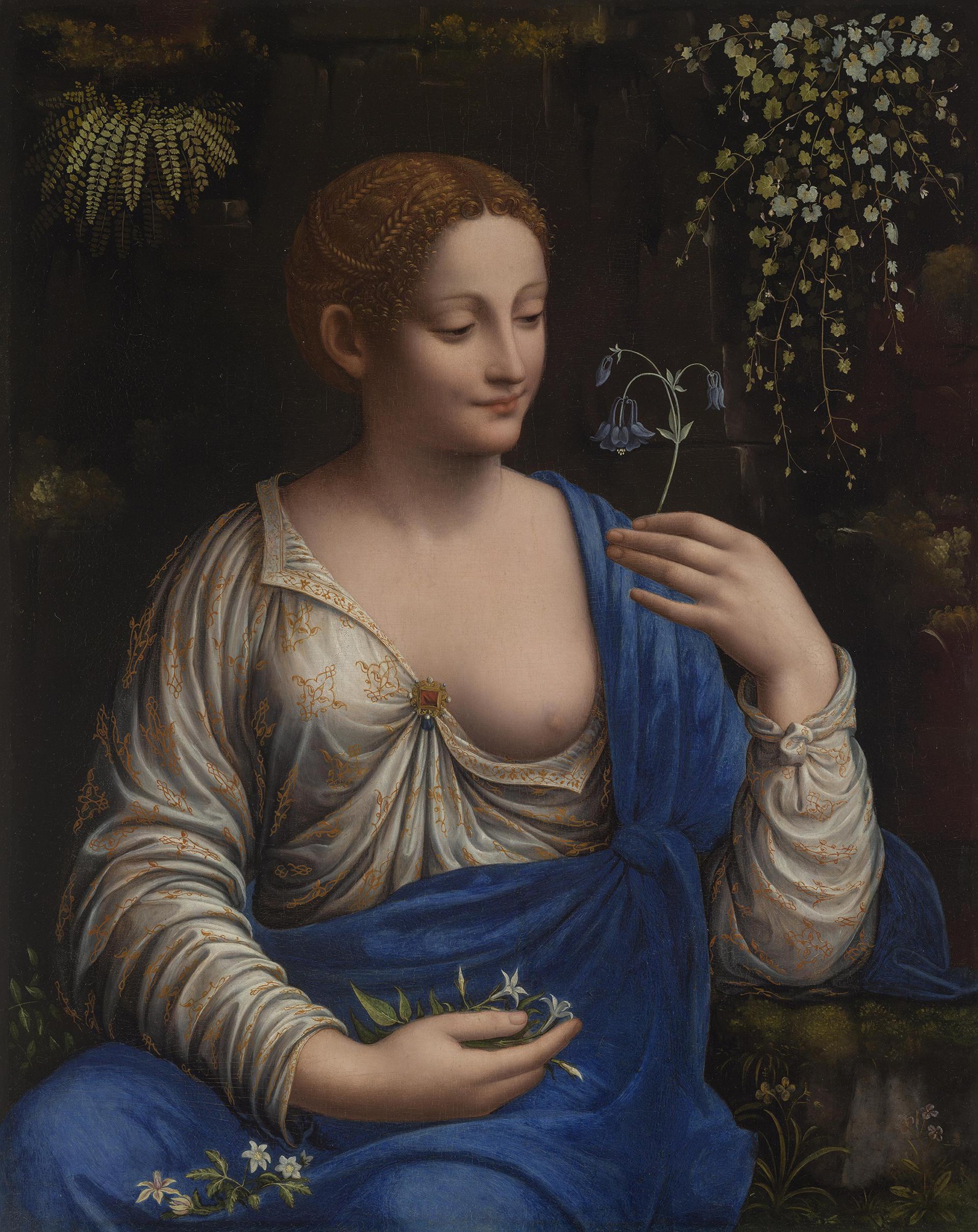
While the example that Vasari had named was actually Salaì (paintings by Salaì that Leonardo had – to whatever degree – reworked, and that were taken as originals by Leonardo, and this in Milan), our first example is Francesco Melzi. And it has to be Melzi, since what we find at Fontainebleau, at the court of French king Henry IV and queen Maria de’ Medici, is, Melzi as well as Leonardo.
If we put aside for a moment that also a Salvator Mundi painting multiplied at Fontainableau, due to the work of Franco-Flemish painters at Fontainebleau – what we know is that the Vertumnus and Pomona (now in Berlin; picture on the left) was at Fontainebleau, and also do we know, this is perhaps a bit less known, that Maria de’ Medici was in possession of a Flora (picture on the right). This Flora painting is the Melzi Flora (now in the Hermitage), and this is a painting that, as it seems (I am not in the position to consult the necessary documents), was taken as a painting by Leonardo then.
As for the Vertumnus and Pomona – this is either a painting that from the beginning was taken as a Leonardo, or it did turn to be one (perhaps due to a Melzi signature scratched off, plus wishful thinking).
And the picture at Fontainebleau completes if we further mention that Fontainebleau painter Ambroise Dubois (the supposed author of the Detroit Salvator), not only was commissioned to copy the Mona Lisa, this we know, but that he might also have been commissioned to copy the Flora, since I am tempted to see the Salvator group which I have named the ›Fontainebleau group‹ in parallel to the various Flora versions of which we know, and of which the version today at Blois strikes me as a possible Dubois (small picture on the right).
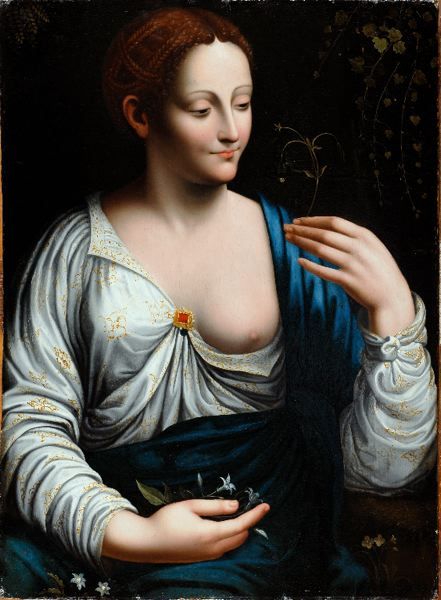
Be it as it may, but if it would be indeed true that also the Flora was copied at Fontainebleau, our first insight must be that a Melzi painting (or better: a painting that is, by general consensus, seen as a Melzi today) had been appreciated to the degree that it was copied. And if it was copied as a Leonardo (because people, then, thought it to be a Leonardo) we would have a model, a paradigm, a theory that could also be applied to the Salvator Mundi known as version Cook (the notoriously famous version, which I consider to be a Melzi-plus-Leonardo-hybrid that was possibly finished also by help of Salaì). Brief: it seems that at Fontainebleau, at around 1600, there was hardly made a difference between Melzi as an author and Leonardo as an author. And this insight may never be lost.
Two) Marco at the Papal Court
(Picture: Sailko)



(Picture: Hans Weingartz)
Our second example is the Salvator Mundi by Marco d’Oggiono at the Galleria Borghese, which is a painting that was, as the Galleria Borghese is telling us, given by Pope Paul V (small picture above on the left) to his nephew Scipione Borghese (small picture on the right) as a present in 1611. Thus there is little to argue here: the painting by Marco, by general consensus a rather early one, was seen as a Leonardo in 1611, and this by a pope, who provided his nephew, the founder of the Galleria Borghese, with it, leaving it to further centuries to correct the attribution, which, however, is on record. Thus, also at the papal court: the painting of one of the Leonardeschi, of Marco d’Oggiono, who was, at his day, probably much more popular than he is today, had already turned to be a Leonardo.


Three) Luini at Whitehall
The Luini Flora in the Royal Collection, in Palace of Whitehall then, is our third and last example. Was there a discernement at the court of Charles I and Henrietta Maria as to the difference between a Luini and a Leonardo? It seems that there was none: »recorded in the Little Room between the Breakfast Chamber and the Long Gallery at Whitehall in 1639 (no 21) as Leonardo da Vinci«, the website of the Royal Collection does inform us. And the discernment was brought back only much later.
Thus we would be mistaken to think that the conoscenti at the place where we see also a Salvator Mundi painting, attributed to Leonardo da Vinci, did make a difference. As a matter of fact they did not. Luini was Leonardo. And in case there might have been also Melzi or Dubois – on what grounds may we claim that the court of Charles I had the necessary discernment to tell what was what? In other words: is it not more appropriate to think that Leonardo attributions, also at the courts of the Stuarts, and also generally, are not particularly reliable? Due to early confusion and necessary discernement lost very early on?
MICROSTORY OF ART
ONLINE JOURNAL FOR ART, CONNOISSEURSHIP AND CULTURAL JOURNALISM
HOME
© DS